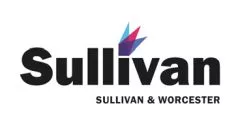Medical equipment manufacturer Becton, Dickinson and Company ("BD"), has been making its MICROTAINER blood collection containers since 1945. According to The New York Times, the MICROTAINER containers are a $25 million a year business for BD. It was not surprising, therefore, that BD called its trademark lawyers when Silicon Valley start-up darling Theranos, a company now valued at around $9 billion, applied on an intent-to-use basis to register the name NANOTAINER in connection with blood collection containers. Theranos and its products have gained wide attention based on claims that Theranos could perform numerous medical tests quickly and inexpensively using a tiny sample of blood from a finger prick, rather than tubes of blood drawn from the arm.
Legal proceedings naturally followed. First, BD in March, 2014 filed an opposition proceeding in the U.S. Trademark Office seeking to prevent registration of Theranos's NANOTAINER Mark. Theranos opened a second front by filing in November, 2014 a civil action in federal court in the Northern District of California. Theranos sought a declaratory judgment that the NANOTAINER mark did not infringe the MICROTAINER mark, primarily because the Theranos nanotainers were sold and marketed through different channels of trade. Theranos further argued that BD's trademark should be invalidated on the grounds that the MICROTAINER mark had become a generic term to identify a group of blood collection vessels. BD replied that Theranos's conduct was particularly troublesome in light of the fact that Theranos had not yet received FDA approval for the use of its nanocontainers. Before the cases reached the discovery phase, however, the parties arbitrated and settled their dispute on September 28, 2015 with apparently no money changing hands.
While we do not have access to information regarding the details or motivation for the settlement, a few observations are in order. First, as subsequent developments seem to suggest, Theranos may have been interested in settlement to staunch potential problems with the FDA compliance. Since it settled the suit with BD, Theranos finds itself in a recent swirl of FDA-related controversy. In late October of this year, the FDA issued two reports stating that Theranos had used an unapproved medical device, did not adequately follow up on customer complaints and had various deficiencies in quality control procedures. Theranos has temporarily stopped shipping nanotainers until FDA approval is obtained. Although claiming it was doing so voluntarily, pressure from the FDA to make this happen cannot be discounted. The Theranos story is just another in a long lineage of companies who enter litigation prepared to fight over an issue, but end up settling because pre-existing vulnerabilities – sometimes completely unrelated to the issues being litigated – come to light.
What about BD's motivation to settle? How dangerous to BD was Theranos's challenge that BD's MICROTAINER mark had become generic? The facts supporting or disproving Theranos's allegations may never be known, but the Theranos genericness challenge does point out the risk of using one's trademarks as the product name, rather than a brand name for a type of product. Just ask the people who brought you ASPIRIN brand analgesics and THERMOS branded containers for liquids. When the mark becomes the product name, you open an artery towards making your mark generic.
The content of this article is intended to provide a general guide to the subject matter. Specialist advice should be sought about your specific circumstances.


